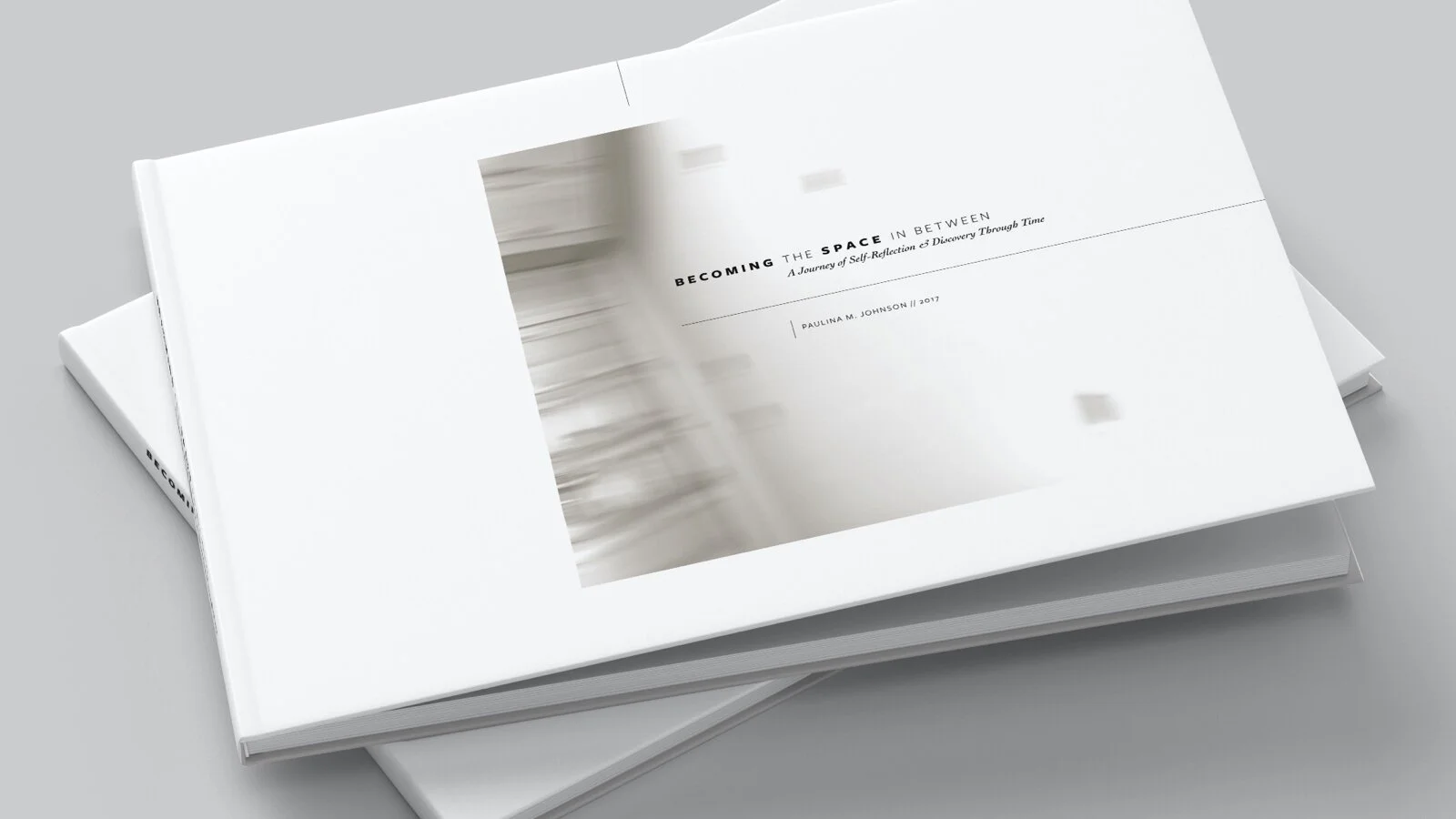Graduate Thesis
This project is the culmination of my work as a graduate student at the Vermont College of Fine Arts. It is a journey of self discovery guided by a genuine curiosity to explore ‘space’: space as concept, space as metaphor, space as thing, space as non-thing, space as place, space as creative element, and, most importantly, space within myself.
Physical Space
Byobu screens, although popular in Japan, originated in China during the Han Dynasty (206 BCE-220 CE). The word ‘Byobu’ means ‘wind protection,’ as these were originally built to block drafts. Through time, Byobu screens have served as dividers to enclose and separate varying spaces, while showcasing calligraphy, natural landscapes, and scenes of daily life.
I chose to build a Byobu screen out of my thesis book in order to showcase my journey while bringing together my interests in paper, wood, and building structural patterns in a sustainable way.
Mental Space
Within, and beyond, every book lies a metaphorical and intangible inner space. This is the space where the writer and the reader are able to connect. It is a powerful realm woven by the threads of language, story, and ideas, able to transcend both time and physical space.
The inner space created by my Byobu screen installation is meant to create a brief respite within the greater physical space that may surround it. It is also meant to represent the inner and elusive nature of our own mental space which we all access and inhabit in the form of our consciousness.
Shared Space
Shared space is that common and human lived space where experience and meaning intersect. Outside the limitations of physical space, and beyond the personal confines of mental space, shared space takes on an abstract form that combines the experiences we live within physical space and the beliefs and assumptions that make up our consciousness.
For this particular part of my exhibition I asked others to share their 'happy place' onto portions of my thesis book. As such, the fragments become a collective of ideas and of shared personal meaning.
Abstract
Throughout my time at VCFA, I discovered a deep personal connection to the word, the concept, 'space'. In its elusive, all-encompassing, and undefined essence, space defies definition, form, and category, yet, it occupies a meaningful place within the evolution of human thought. Space can be considered a quantifiable 'thing' just as much as an ethereal 'non-thing'. It is empty, it is filled, and in art and design, it is indispensable. Us, designers, use space as both an artistic element and as a tool to understand and express life experiences. As such, and concurring with German art historian Wilhelm Worringer, space is the reflection and the catalyst of all aesthetic impulses within human culture.
This idea led me to wonder: what is the nature of my personal relationship to space and how does that relationship inform or affect my sense of beauty? Furthermore, what can artists and designers learn from the principles of spatial theory to understand their own making tendencies and, in turn, the power of their work?
These were the guiding questions at the core of my thesis. Becoming Space is a personal journey along two parallel paths of inquiry. The first, paved with curiosity and introspection, seeks to understand the development of key aspects of my own identity. The second, guided by the principles of Spatial Theory, aims to explore a spectrum of ideas about how all of us fundamentally conceive of, relate to, interact with, and ultimately portray space. In tandem, each path offers a unique lens through which creative work can be considered and assessed.



